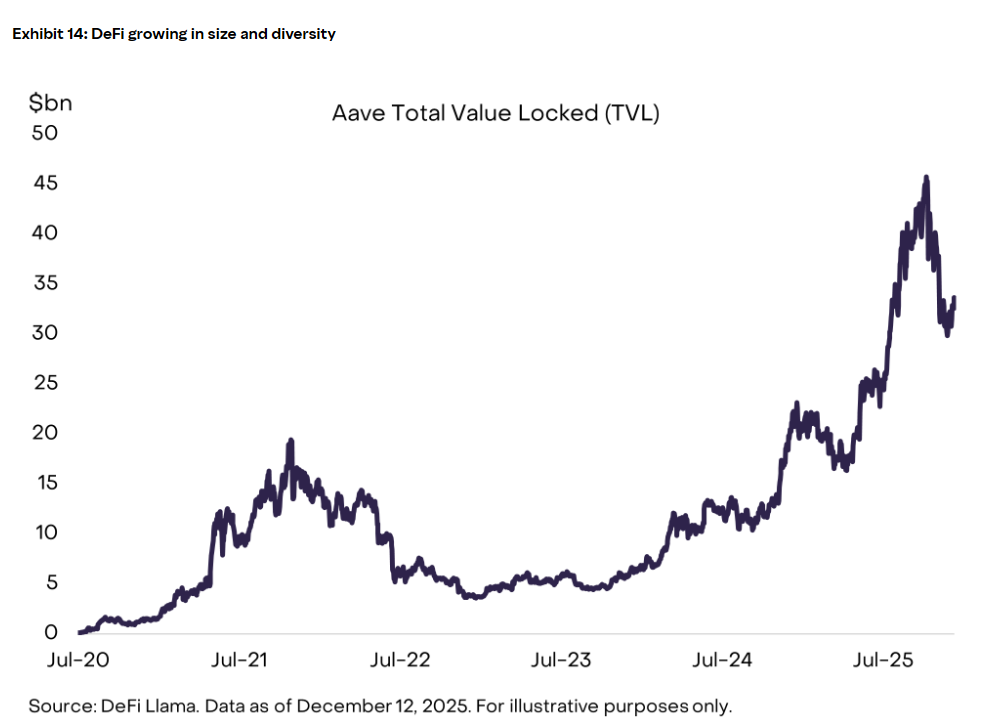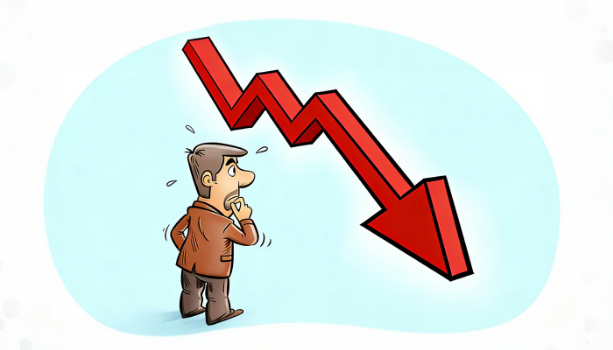"If the government has to shut down, then shut it down." U.S. President Trump’s statement from last week still echoes, and now the U.S. government is inching closer to a shutdown.
According to data from the prediction market Polymarket, the probability of a U.S. government shutdown in 2025 has surged to 76%-82%, reflecting deep market concerns over a breakdown in negotiations in Washington.
On September 30, less than 48 hours before the October 1 deadline for a government shutdown, Trump met with leaders from both houses of Congress, but no progress was made on Democratic demands to extend healthcare subsidies and reverse Trump’s cuts to the Medicaid program.
01 Government Shutdown: A New Stress Test for the Crypto Market
The U.S. federal government is once again facing a shutdown crisis. Unless Congress can pass a comprehensive funding bill or a continuing resolution by midnight Tuesday, some government functions will shut down due to being deemed "non-essential."
The root of this political deadlock lies in the inability of Republicans and Democrats to reach a bipartisan agreement on budget issues.
Democrats have insisted that the healthcare budget cuts included in the July budget proposal must be reversed as a precondition for supporting the budget.
The risk of a government shutdown has already had a tangible impact on the cryptocurrency market. Ethereum briefly fell below $3,900, Bitcoin dropped below $109,000, and Solana fell over 5%, with the entire market engulfed in a risk-averse sentiment.
Institutional investors are adopting risk-averse strategies at the end of the quarter, shifting funds to safe-haven assets such as the dollar, short-term government bonds, and stablecoins.
02 Regulatory Stalemate: A Deadly Delay for Crypto Legislation
One of the direct impacts of a government shutdown on the cryptocurrency industry is the forced delay in the review process of key regulatory legislation.
The "Digital Asset Market Structure Bill," currently under review by the Senate Banking Committee, will be directly affected. The bill was originally scheduled for preliminary review by the end of September but has been pushed to October; if the government shuts down, the review schedule will be delayed again.
Jessica Martinez, Senior Director of Government Relations at the Blockchain Association, stated, "While both sides have engaged in good-faith negotiations, a shutdown will hinder critical progress on crypto policy."
In addition to the market structure bill, several other cryptocurrency-related bills currently under review, including the "Financial Innovation and Technology Act of the 21st Century" (FIT21), the "Payment Stablecoin Clarity Act," and the "Blockchain Regulatory Certainty Act," may also be delayed due to the government shutdown.
The delay of these bills means the crypto industry will continue to face challenges in a regulatory gray area, forcing businesses and market participants to operate amid uncertainty.
03 Regulatory Agencies: A Vacuum in Enforcement and Rulemaking
A government shutdown will also lead to a significant reduction in the functions of key financial regulatory agencies.
Agencies such as the U.S. Securities and Exchange Commission (SEC) and the Commodity Futures Trading Commission (CFTC) will be forced to drastically cut staff, retaining only the most essential operations.
This means that the review of new ETF applications will be delayed, approvals for changes to exchange rules will be paused, the release of guidance documents will be postponed, and enforcement actions will be limited to the most critical matters.
Didier Lavallée, CEO of Canadian company Tetra Digital, pointed out that the shutdown may "impact SEC Chairman Gary Gensler's agenda in the medium term," but the momentum around crypto policy development still enjoys bipartisan support.
Therefore, while the policy timeline may experience short-term delays, it is unlikely to fundamentally hinder progress in the long run.
04 Historical Patterns: Shutdowns and Crypto Asset Performance
Looking back at historical government shutdowns, the performance of cryptocurrencies has varied.
The government shutdown in October 2013 lasted for 16 days. From October 1 to October 17, the price of Bitcoin rose by 14%, from $132.04 to $151.34.
However, this is not a universal rule. The longest shutdown in history occurred from December 22, 2018, to January 25, 2019, lasting 35 days, during which the price of Bitcoin fell by 6%, dropping from $3,802.22 to $3,575.85 by the end of the shutdown.
Cryptoquant's research director Julio Moreno analyzed the reasons for this discrepancy: "In 2013, Bitcoin was in the final stages of a bull market, with strong demand growth." By the time of the 2018 government shutdown, "Bitcoin's demand was shrinking during a bear market."
Moreno added that Bitcoin's current situation resembles that of 2013 rather than 2018. "As we enter the fourth quarter, Bitcoin's demand is increasing, which is typically a quarter of positive price performance."
05 Data Vacuum: An Amplifier of Market Volatility
One often-overlooked impact of a government shutdown is the forced delay in the release of economic data.
John Reed, head of macro and thematic research at Deutsche Bank, noted, "If Congress cannot reach an agreement on a short-term funding resolution by midnight tomorrow, Friday's employment report may become the first high-profile casualty of a potential government shutdown."
Investors know that the Federal Reserve's monetary policy decisions largely depend on employment and inflation data. The uncertainty surrounding data releases may lead to increased volatility in the crypto market, widening bid-ask spreads, especially for less liquid tokens.
This information vacuum could amplify market volatility and extend recovery periods following any downturns.
Nansen research analyst Nikolaj Sandgaard stated that a government shutdown could exacerbate short-term volatility in the cryptocurrency market, but he also questioned, "If a broad base of investors believes the 'shutdown' will be resolved quickly, could the situation be more than that?"
06 Investor Strategies: A Guide to Navigating Uncertainty
In the face of the risk of a government shutdown, investors should consider a multi-faceted strategy adjustment.
Short-term strategies include increasing cash allocation for greater flexibility; reducing leverage, as volatility during a government shutdown may increase; and setting staggered buy orders in case Bitcoin experiences a 5-15% pullback, preparing for a layered buying strategy.
Medium to long-term strategies should include: assessing historical patterns, studying Bitcoin's performance during past government shutdowns; and monitoring the reset of regulatory timelines, closely watching the new timelines for regulatory approvals after the government reopens.
Investors should closely monitor the following three key liquidity indicators to gauge market direction:
ETF fund flows and changes in stablecoin supply: The fund flows of Bitcoin ETFs are an important indicator of institutional investor sentiment.
Perpetual contract basis levels and funding rates: The basis levels and funding rates of perpetual contracts can reflect market sentiment and leverage levels.
Prediction market estimates of the duration of the government shutdown: Prediction markets can provide real-time market consensus on how long the government shutdown may last.
07 Conclusion: Risks and Opportunities Coexist
The U.S. government shutdown will undoubtedly bring short-term volatility and uncertainty to the Bitcoin market.
Historical data suggests that during such macro shock events, Bitcoin typically experiences a 5% to 15% pullback followed by a rebound once policy clarity is restored.
However, the specific impact of each government shutdown depends on its duration and the extent of disruption to the regulatory process. A short-term shutdown may only cause temporary volatility, while a long-term shutdown could have more profound effects on the entire cryptocurrency ecosystem.
For long-term investors, a government shutdown may create favorable buying opportunities. For short-term traders, increasing cash holdings and waiting for clearer signals may be a more prudent strategy.
However, as the political landscape in Washington shifts, the cryptocurrency market once again stands at a crossroads. Whether it’s the 14% rise during the 2013 shutdown or the 6% drop in 2018, history reminds us that politics and financial markets are forever intertwined, and seeking opportunities amid uncertainty is the eternal challenge of the market.
免责声明:本文章仅代表作者个人观点,不代表本平台的立场和观点。本文章仅供信息分享,不构成对任何人的任何投资建议。用户与作者之间的任何争议,与本平台无关。如网页中刊载的文章或图片涉及侵权,请提供相关的权利证明和身份证明发送邮件到support@aicoin.com,本平台相关工作人员将会进行核查。




